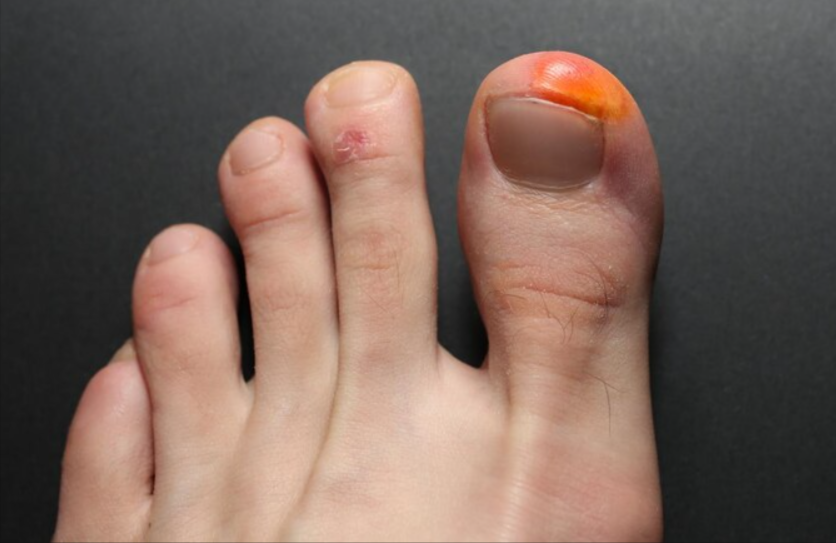Nystatin for Toenail Fungus: Can Help You Treat Fungus?
Contents

Toenail fungus, scientifically known as onychomycosis, is an annoying and sometimes persistent condition that affects millions of people worldwide.
The condition often starts with discoloration, thickening, and brittleness of the nail and, if left untreated, can lead to discomfort, pain, and even secondary infections. While there are many treatments on the market, including over-the-counter options and natural remedies, one question frequently arises: can nystatin be an effective treatment for toenail fungus?
We’ll take a closer look at nystatin, how it works, whether it’s a viable solution for toenail fungus, and other treatment options you might want to consider.
What is Nystatin?
Nystatin is a well-known antifungal medication that has been used for decades to treat fungal infections.
It was first discovered in the 1950s and is particularly effective against Candida species, a type of yeast that can cause infections in areas such as the mouth (thrush), skin folds, and genitals.
Unlike some other antifungal medications, nystatin is typically used for superficial or mucosal fungal infections rather than systemic (internal) infections.
It comes in various forms, including creams, powders, oral suspensions, and tablets, allowing it to target specific areas of fungal overgrowth effectively.
But when it comes to toenail fungus—a condition caused primarily by dermatophytes (a different class of fungi)—does nystatin offer any relief?
Can Nystatin Treat Toenail Fungus?
Toenail fungus is usually caused by dermatophytes, which are fungi that thrive on keratin, the protein that makes up your nails.
Occasionally, yeast or non-dermatophyte molds may also cause the infection. Because nystatin is most effective against yeast (specifically Candida), its efficacy for treating toenail fungus caused by dermatophytes is generally considered limited.
Studies and Evidence
While there is little scientific evidence directly linking nystatin to the treatment of onychomycosis, anecdotal reports suggest that it may work in certain cases where yeast, rather than dermatophytes, is the primary cause of the infection.
However, this is relatively rare, as dermatophytes are the main culprits in the vast majority of toenail fungus cases.
In short, nystatin is not typically recommended as a first-line treatment for toenail fungus, especially when other proven antifungal options are readily available.
Why Nystatin May Not Be the Best Choice?
If nystatin isn’t the most effective option, why not? Here are a few key reasons
Limited Spectrum of Activity
Nystatin primarily targets Candida and similar yeasts, whereas toenail fungus is most commonly caused by dermatophytes. This mismatch makes it less effective in treating the condition.
Penetration Issues
Toenails are notoriously difficult to treat due to their dense, keratinized structure. Even highly effective antifungals can struggle to penetrate the nail bed, where the fungus resides. Nystatin’s formulation is not designed to address this challenge.
Availability of Better Alternatives
Treatments such as terbinafine (Lamisil), itraconazole (Sporanox), and topical solutions like efinaconazole (Jublia) or ciclopirox are more commonly prescribed because they are specifically formulated to combat dermatophytes and penetrate the nail effectively.
What Are the Best Treatment Options for Toenail Fungus?
If nystatin isn’t the best choice for most cases of toenail fungus, what are the alternatives? Here’s a rundown of the most effective treatments available
Oral Antifungal Medications
- Terbinafine (Lamisil): This is one of the most commonly prescribed oral antifungal medications for toenail fungus. It works by inhibiting the growth of dermatophytes and has a high success rate. A typical course of treatment lasts 6–12 weeks.
- Itraconazole (Sporanox): Another oral antifungal option, itraconazole is particularly effective against both dermatophytes and some yeasts. It is often prescribed as a pulsed-dose treatment over a few months.
Topical Antifungal Solutions
- Efinaconazole (Jublia): A topical solution specifically designed to penetrate the nail and target fungal infections. It’s often recommended for mild to moderate cases.
- Ciclopirox (Penlac): This medicated nail lacquer is applied directly to the affected nails. It’s less effective than oral treatments but can be useful for mild infections or in combination with other therapies.
Laser Treatments
Laser therapy is a newer option for toenail fungus. It works by using focused light to kill the fungus without damaging the surrounding tissue. While promising, laser treatments can be expensive and may require multiple sessions.
Home Remedies and Adjunct Therapies
While not as effective as prescription treatments, some people find relief with natural remedies like tea tree oil, oregano oil, or apple cider vinegar. These options may help to manage symptoms but are unlikely to completely eradicate the infection.
Tips for Preventing Toenail Fungus
Preventing toenail fungus is always better than treating it. Here are some simple steps you can take to reduce your risk
Keep Your Feet Clean and Dry
Fungi thrive in warm, damp environments. Make sure to dry your feet thoroughly after showering or swimming.
Wear Breathable Shoes and Socks
Choose footwear made from breathable materials like leather or mesh, and opt for moisture-wicking socks to keep your feet dry.
Avoid Walking Barefoot in Public Areas
Locker rooms, public pools, and communal showers are hotspots for fungal infections. Always wear flip-flops or shower shoes in these settings.
Trim Your Nails Properly
Cut your nails straight across and avoid digging into the sides, as this can create openings for fungi to enter.
Disinfect Nail Tools
If you use nail clippers or files, clean them regularly with alcohol to prevent the spread of infection.
While nystatin is an effective antifungal for certain conditions, it’s not the best choice for most cases of toenail fungus.
Because onychomycosis is typically caused by dermatophytes rather than yeast, other antifungal medications like terbinafine or itraconazole are much better suited to the task.
If you suspect you have toenail fungus, it’s always a good idea to speak with a healthcare provider to confirm the diagnosis and explore the best treatment options for your specific case.
And remember: consistency and patience are key when it comes to treating fungal infections—results can take months, but sticking to your prescribed regimen will significantly improve your chances of success.


